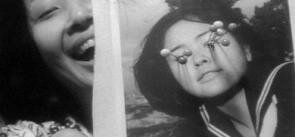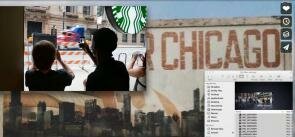If it is true that since the introduction of accelerated digitalization, the practice of archiving has strongly influenced modes of academic work and cultural activities, it has also massively affected artistic practice.
Talks
Error message
The spam filter installed on this site is currently unavailable. Per site policy, we are unable to accept new submissions until that problem is resolved. Please try resubmitting the form in a couple of minutes.If cinematic media may be understood to have a Copernican potential, whereby they may be used as instruments of scientific discovery and anti-anthropocentric displacement, how does such a potential change how one conceives of the world or even constructs, or for the historian, reconstructs new ones?
What is a "medium"? And how can the history of the term - the way in which it has been used and theorized - help us answer this question?
VISUAL STUDIES. Intersecting Art History and Film Studies
February 18, 2016 16h00
DB Clarke Theater
A discussion with Thomas Elsaesser and James Elkins
Our contemporary media landscape might be called the era of heightened seriality. In this talk, Professor Jason Mittell explores how serial storytelling has pervaded both film and television narrative, considering what formal elements define contemporary seriality, and how seriality is forged by industrial and viewing practices.

From the mid-1940s, when Maurice Merleau-Ponty gave a lecture on film at the Institut des hautes études cinématographiques in Paris, which was subsequently published as ‘Le Cinéma et la nouvelle psychologie’ (‘Cinema and the New Psychology’), film scholars have shown a keen interest in the relationship between his philosophy and cinema.

In most cases, to film (the act of filming something) implies capturing an event which actually takes place, in order to create an image of this event – faithful or not, altered or not, but always referring to it. We all know the momentous importance that the history of film theory has assigned to this conservation of the filmed event, in a filmic work that would perpetuate its memory.
This talk contemplates the figure of enchainment in one of the more graphic films of contemporary horror and exploitation cinema, Tom Six’s The Human Centipede (2009), which literalizes intolerable fastening, an anxiety of overclose touching, in the conceit of its title—a cruel violence in which three bodies are sewn to each other, mouth to anus.
Pages
- 1
- 2
- 3
- 4
- 5
- 6
- 7
- 8
- next ›
- last »


